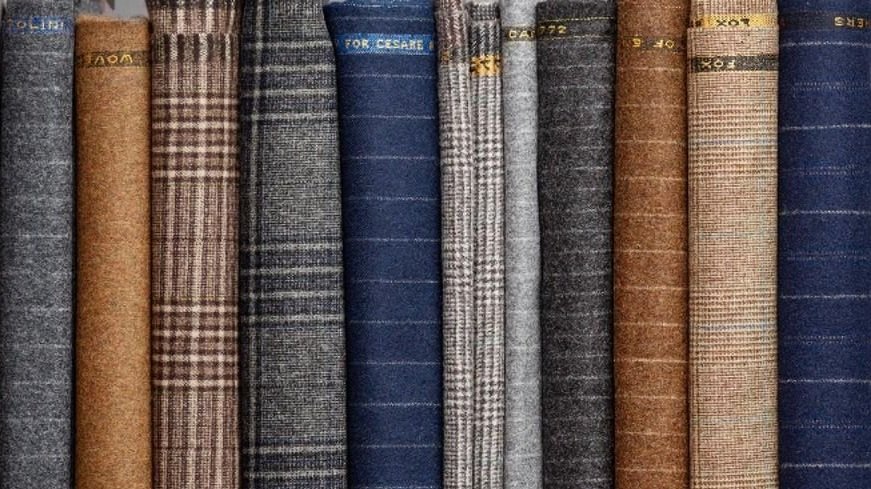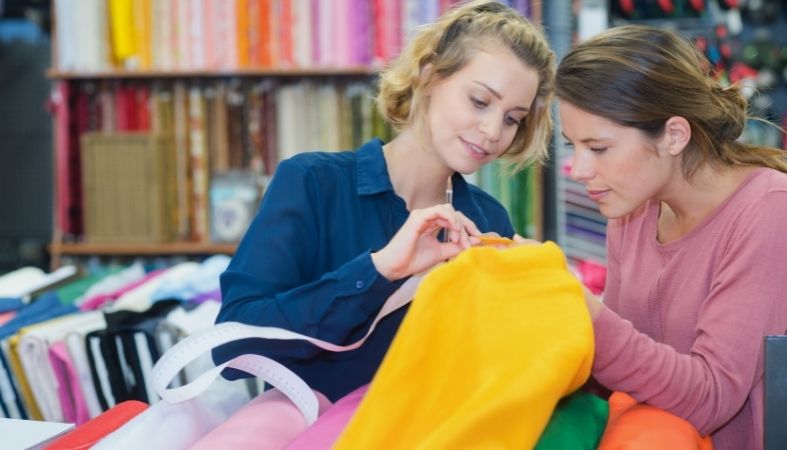10 Easy Facts About All 4 Way Stretch Fabrics Explained
Table of ContentsThe Basic Principles Of All 4 Way Stretch Fabrics The Facts About All 4 Way Stretch Fabrics RevealedThe Greatest Guide To All 4 Way Stretch FabricsThe Best Guide To All 4 Way Stretch FabricsThe Ultimate Guide To All 4 Way Stretch FabricsThe 6-Second Trick For All 4 Way Stretch FabricsAll 4 Way Stretch Fabrics - Questions
As I also want UV protection from my garments when I head out, I would choose a largely woven cotton textile. Also the underclothing is much better in cotton (No spandex bands anywhere near the skin). Examine out the very best fabrics appropriate for making summertime clothing. One even more consideration when purchasing the fabric is the way it will certainly after cleaning.A sure thing would be to purchase least 10% extra fabric. If you can purchase preshrunk material, this is the ideal. Preshrunk textile will have tags that will certainly claim" and so on. If you are looking for a material that will certainly not stretch or lose form, you can look for the "anti-sag" tag.

If you are matching the shade, like picking the cellular lining for the primary textile or picking fabric to add as trim, this is specifically vital. The textile display rooms will typically have a light well where you can see the textile in sunshine (or a home window with great light from outside).
The 5-Second Trick For All 4 Way Stretch Fabrics

The majority of textiles are about 44 broad. When you go to buy fabric, estimate exactly how much you want initially and then go to the shop.
These are available in the stores I regular as cut items they are mainly treasured reduced and some of them, when they are last off the bolt, prized really reduced. You will certainly have to ask the salesmans for pieces like that. Some terrific bargains can be had in this manner. In dressmaking, we acquire fabric by the yard/meter.
How All 4 Way Stretch Fabrics can Save You Time, Stress, and Money.
In a quarter of a yard, you obtain a 9 by 44 strip of textile, which is concerning 22 centimeters in size. It is constantly far better to get wider cloth. According to the width of materials, they might be called single-width and double-width. Solitary size is generally approximately 49 inches in size and dual width up to 60.
You can find out more concerning yard to meter conversion right here. Take a look at this article on reviewing a tape step Select fabrics that are not too difficult or inflexible, or you wouldn't be comfy in them. Bed linen, Denim, flannel, For chillier environments, choose wool (100% as well as wool blends) woollen tweeds, woollen crepe; it generally depends on what pants you are speaking concerning Tailored pants, Unstructured Pant, Combined, Denim.
All cotton materials are excellent for kids. Knit textiles are also wonderful for kids you can go for woollen knits.
All About All 4 Way Stretch Fabrics
Look into this post on the best textile for garments for children and youngsters for even more information on this topic. Light-weight cotton is my preferred to sew skirts. Cotton grass towel in attractive prints is terrific. Silk jersey is a fantastic material for sewing skirts, as is Ponte Roma knit material.
Drapey rayons, soft woollen, lycra blends, and stretch velours are all appropriate for stitching skirts. Wool (Wool crepe has a wonderful drape and offers sufficient structure for coats; woollen tweeds are fantastic as well), Bed linen & Flannel. Raw silk, satin, taffeta, velour, Lace, silk chiffon, and Organza are all excellent for making gowns.
You can buy medium-weight textiles with some spandex/elastane added for a fitting bodycon-type dress. For drapey dresses, you can choose lightweight materials. Crepe, challis, and charmeuse are all drapey fabrics suited for this design.
Lightweight cotton material, Cambric, Chintz, Twill, Faille, Seersucker, Poplin, light-weight woven broadcloth, batiste, bed linen, eyelet are great for making tee shirts and shirts. Smooth satin textile is great for making ventilated tops. When acquiring formed textile (most of the patterned textile comes with a size of 45 or 54 inches), there will be pattern repeat in these materials, and this should be taken right into consideration when cutting material as well as getting them i.e., if you desire to match the patterns at the seams.
The smart Trick of All 4 Way Stretch Fabrics That Nobody is Talking About
The concepts will be dispersed in a planned fashion on the fabric. You may observe sometimes If the print is not put on the textile properly, it can not be matched or lined up when built without distorting the fabric and the hang of the garment.


The textile weight is reliant on lots of aspects like the weave, fiber kind, and so on and is commonly signified by GSM. GSM can differ from 60 -700; 700 being the GSM of really high-quality woolen fabric.
One point you have to maintain in mind is that higher material weight does not represent greater material top quality. You can not choose high fabric weight textile jeans for a light-weight drifting shawl.
In a nutshell, the most essential standards to look for in the material you get are as complies with (https://www.reddit.com/user/a4wsfabrics/). The number of strings per inch of material (yarns-per-inch).
The smart Trick of All 4 Way Stretch Fabrics That Nobody is Discussing
This is really vital in any type of material. In high-grade fabric, this equilibrium (either in numbers or in dimension) will certainly always be preserved. Processes used on fabric to boost look and efficiency. The fibers that are woven to make the textile will certainly either be as a solitary strand or will be created by incorporating 2 threads (turned).
A two-ply thread is superior to a single-ply thread.
If you are preparing yourself to start a new embroidery job, choosing a material will be one of the most important action once you determine what you wish to make. After you've gone to all the trouble and expenditure of purchasing the sewing machine you like, a pattern you enjoy, and a material you like, you desire the finished product to be a success? One method to accomplish that is to start by making click this site sure your material is absolutely best for the project.
All 4 Way Stretch Fabrics Things To Know Before You Buy
Exactly how do you recognize which material will provide you the best result? Choosing a textile merely due to the fact that you like the print or layout on it isn't always the ideal approach - knitted stretch fabric.
You understand. In order to prevent doing a whole job for basically nothing, we have actually put together some ideas to aid you determine which textile is appropriate for your project. Allow's claim you currently have a job in mind; just how do you find the appropriate textile for it? One method is to take a look at comparable things in storesor ones you currently have.
Believe of the qualities you want the completed product to have. If apparel, will it be fitted or loose? Dressy or everyday? For cozy weather or cold? Do you desire a solid color or a print? If you are making a non-wearable thing such as a cushion cover or pot holder, use a strong fabric such as canvas.
There is so much info out there regarding materials, their characteristics, and their usages, it could get to be overwhelming! Do not try to take it in all at as soon as; simply start with the task at hand. Learn all you can regarding the material you utilize for this job.
Comments on “The Single Strategy To Use For All 4 Way Stretch Fabrics”